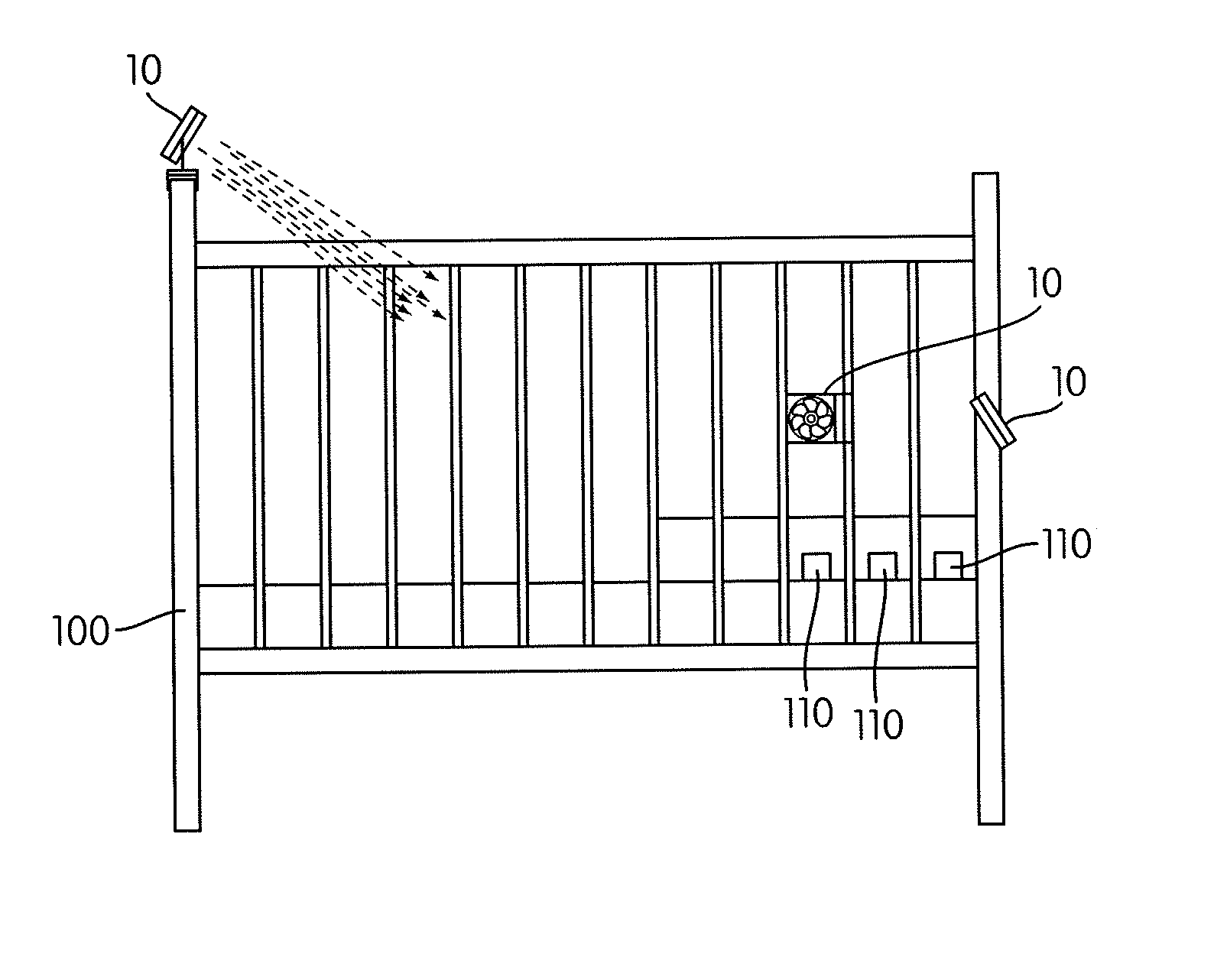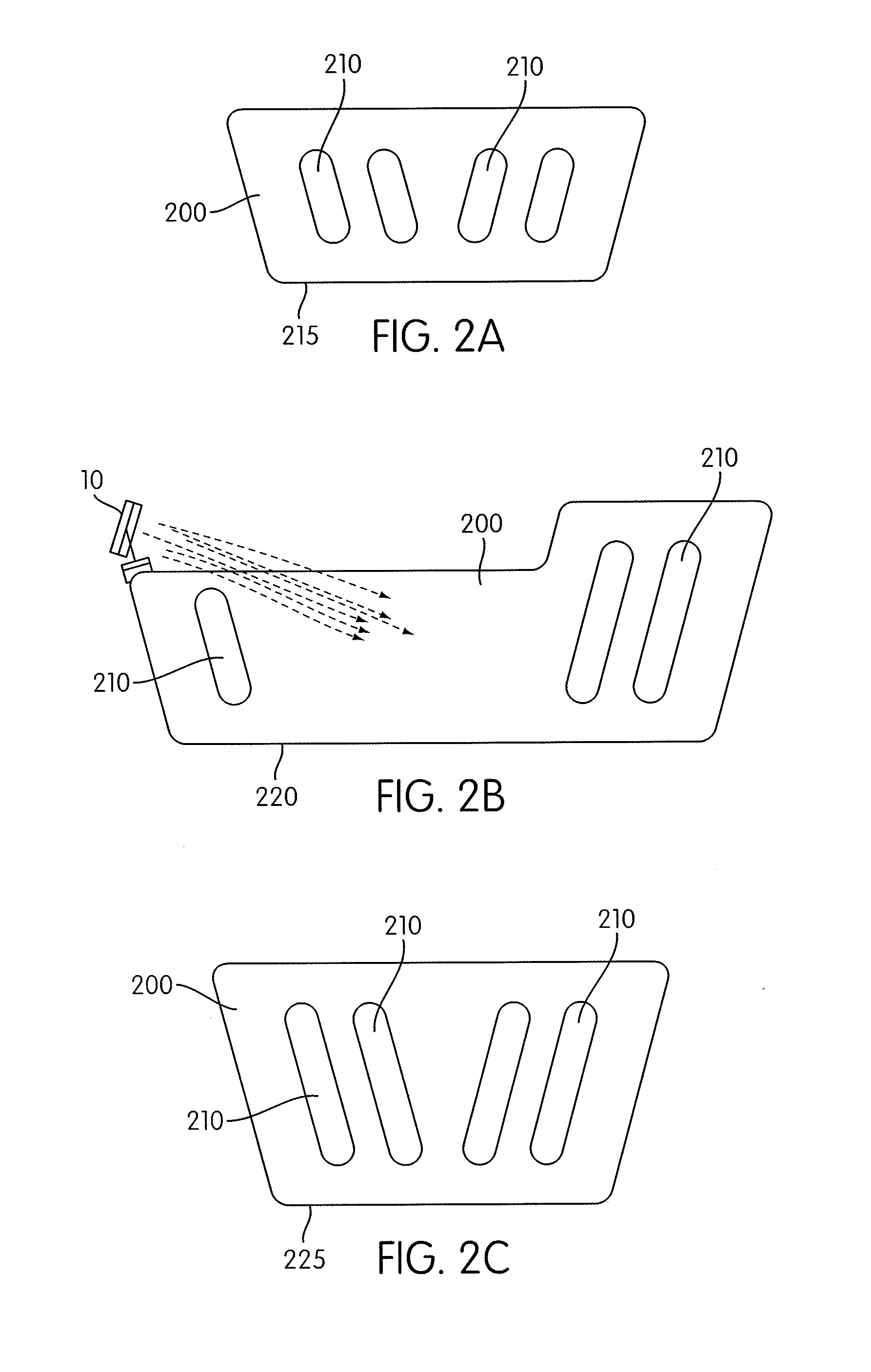Infant Sleeping Area Ventilation System For the Prevention of Sudden Infant Death Syndrome
a ventilation system and infant sleeping technology, applied in the field of infant sleeping area ventilation system for the prevention of sudden infant death syndrome, can solve the problems of lack of oxygen, increase in carbon dioxide in the infant's breathing air, and not well known or understood sids, so as to maintain the sleeping area sanitized and increase oxygen levels
- Summary
- Abstract
- Description
- Claims
- Application Information
AI Technical Summary
Benefits of technology
Problems solved by technology
Method used
Image
Examples
Embodiment Construction
[0035]The invention is generally depicted in FIG. 1, but may be embodied in various forms. Referring to FIG. 1A, a ventilation system 10 is shown attached to an infant's sleeping area, such as a crib 100. The ventilation system 10, as illustrated in FIGS. 6A and 6B, may include a mounting system, a low speed fan 605, a filter 660, a support frame 670, and blade guards 665, which provide fresh air flow while maintaining a safe environment for those coming into contact with the ventilation system 10.
[0036]Referring back to FIG. 1A, the sleeping area, such as a crib 100, may include several ventilation systems 10 arranged in various positions. The ventilation systems 10 may be mounted in any suitable position around the sleeping area. For example, a ventilation system 10 may be mounted on the end of a crib and pointed downwards towards an infant's face. Additionally, ventilation systems 10 can be positioned on the side of a crib 100, between slats on a crib 100, or at the head of a cri...
PUM
 Login to View More
Login to View More Abstract
Description
Claims
Application Information
 Login to View More
Login to View More - R&D
- Intellectual Property
- Life Sciences
- Materials
- Tech Scout
- Unparalleled Data Quality
- Higher Quality Content
- 60% Fewer Hallucinations
Browse by: Latest US Patents, China's latest patents, Technical Efficacy Thesaurus, Application Domain, Technology Topic, Popular Technical Reports.
© 2025 PatSnap. All rights reserved.Legal|Privacy policy|Modern Slavery Act Transparency Statement|Sitemap|About US| Contact US: help@patsnap.com



